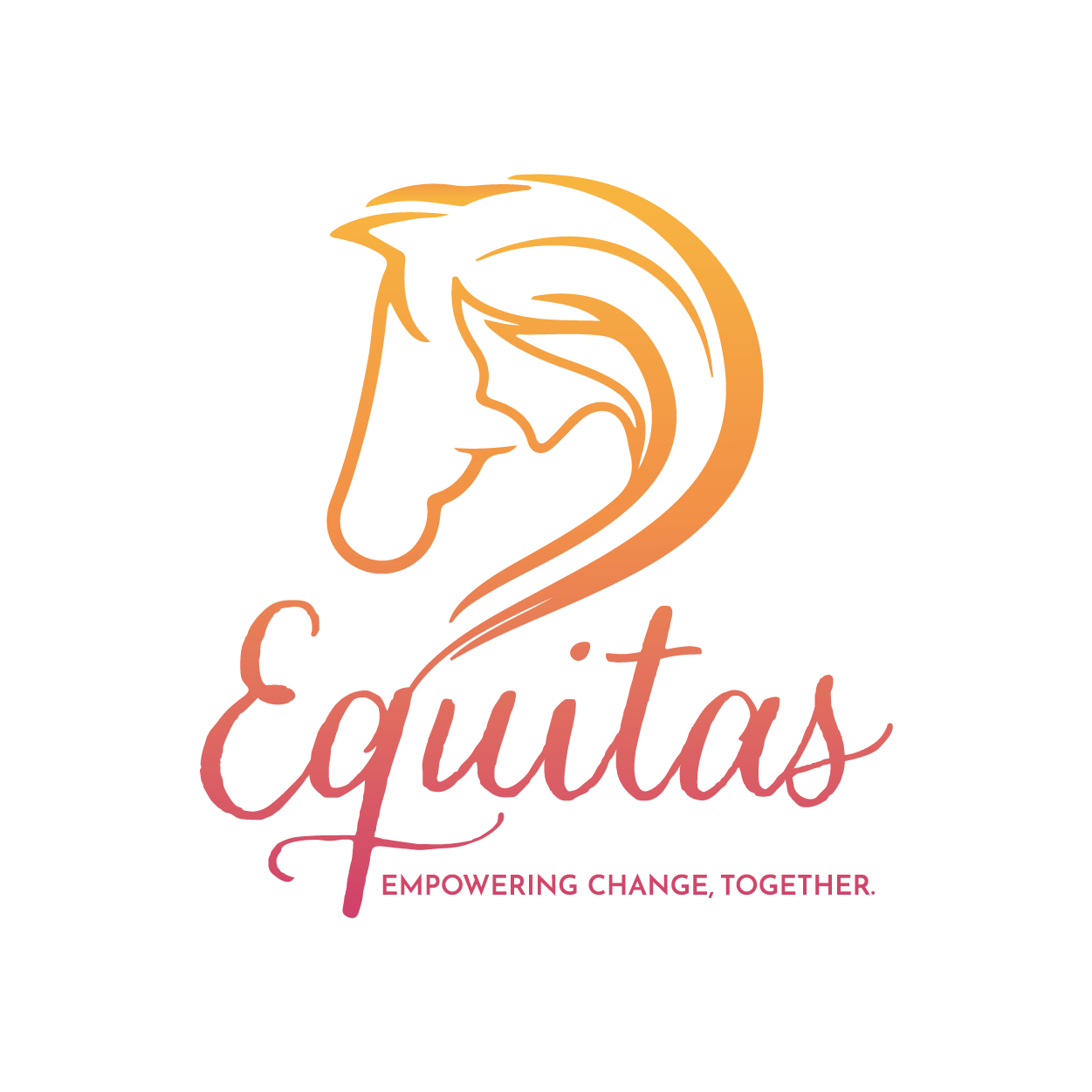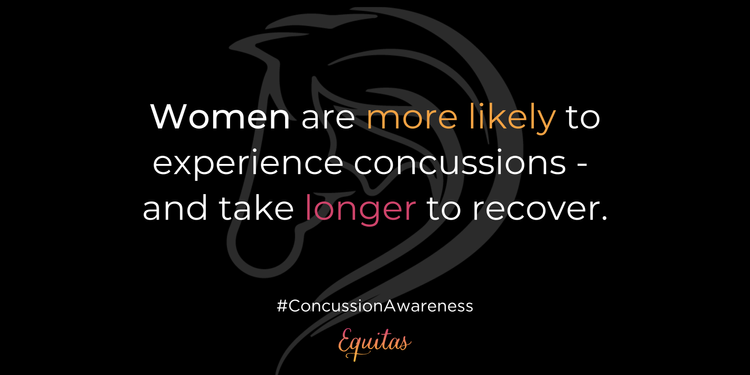Concussion Awareness in Sports Is Improving—But Female Riders Are Being Left Behind

“How many helmets have you replaced?”
It’s a question that equestrians know well. Falls happen, and so do blows to the head. Whether or not a concussion is diagnosed at the time, safety protocols—like those recommended by Equestrian Officials—are clear: after any significant impact, your helmet should be replaced.
And while we all know that top-tier helmets don’t come cheap, the data doesn’t lie. One in two riders will suffer at least one concussion in their career—a rate that surpasses high-contact sports like football and rugby. Even more concerning? Concussion protocols still fail to account for the female majority in equestrian sports.
Why Are Women Overlooked in Concussion Research?
“Gender is critically overlooked when examining the issue of concussions in sports,” says Annelise Ware, MHS, Program Manager for #WeRideTogether, in her recent blog, Bridging the Concussion Gap.
Research shows that concussions impact women differently—and often more severely—than men. Yet, existing concussion protocols don’t reflect these differences. The reason? The majority of concussion research has been conducted on male athletes.
Without gender-specific data, treatment and recovery plans remain incomplete. If concussions aren’t studied properly in women, they can’t be treated properly either.
Debunking the ‘Minor’ Concussion Myth
Seven in 10 sports-related concussions reported to emergency rooms involve children under 17. Yet, despite increased awareness, the “dust yourself off” mentality still lingers—especially in youth sports like equestrian.
One major misconception is that all concussions cause loss of consciousness. In reality, symptoms vary widely. Some riders experience headaches, memory loss, nausea, or shaking. Others report sensory disturbances, like loss of sound or smell.
For years, equestrian sports have lagged behind in concussion awareness. In dressage, traditional top hats weren’t officially replaced by helmets in FEI competition until 2021. Meanwhile, Western disciplines and niche sports like ski-joring have been even slower to adopt helmet mandates.

The Case for Helmets: A Life-Saving Statistic
While the conversation around concussions has evolved, the numbers reinforce what we already know: helmets save lives.
- 60% of horse-related deaths result from head injuries.
- Helmets reduce the risk of fatal head trauma by 70–80%.
- Since ASTM/SEI-approved helmets became mandatory in USEF competitions, riding-related head injuries have decreased by 30% and severe head injuries by 50%.
Even as awareness grows, long-term concussion risks remain. In 2022, the National Institutes of Health (NIH) officially recognised chronic traumatic encephalopathy (CTE) as a result of repeated head trauma. This neurodegenerative disease—linked to memory loss, depression, and dementia—has been widely studied in male-dominated sports like American football, but not in equestrian.
And with women making up 80% of equestrian participants, that’s a serious oversight.
Concussions Affect Women Differently—So Why Aren’t Protocols Changing?
Equestrian sports are unique in that men and women compete as equals. Yet, concussion research still overwhelmingly focuses on male athletes. Over the last two decades, the rate of concussions in female athletes has tripled, but treatment options haven’t caught up.
On average, women take twice as long as men to recover from a concussion and report more severe symptoms. Physiological differences—thinner skulls, smaller neck muscles—make women more susceptible to concussions. Hormones also play a role, with factors like progesterone levels influencing recovery.
Yet, despite these well-documented differences, concussion protocols remain largely male-centric.
An Unequal Playing Field in Research
Even as more women compete in sports today than ever before, the majority of concussion research still focuses on male-dominated sports like football, hockey, and soccer.
A 2022 study published in the British Journal of Sports Medicine revealed a glaring disparity:
- Of the 171 studies cited in the three main papers guiding concussion care, 80% of participants were male.
- 40% of the studies had no female participants at all.
“When scientific studies don’t include female athletes, we are not able to adequately treat them since we are not taking biological differences into account,” Ware writes.
The result? Sporting organisations set concussion policies based on incomplete science—policies that fail to serve the majority of equestrian athletes.
Time for Equestrian to Lead the Change
Equestrian sports and their governing bodies are uniquely positioned to push for better concussion research, prevention, and recovery plans. The helmet mandates of the last two decades were a strong start. But the work is far from over.
By advocating for gender-specific concussion research and safety measures, equestrian can set a new standard—one that makes the sport safer for all riders.
Because when it comes to concussions, one-size-fits-all protocols are leaving female athletes behind. And that’s a risk equestrian sport can’t afford to take.
🟣 References & Further Reading
Rider-Specific Concussion Articles
Horse Network. Concussion Awareness in Sports Is Improving, But Not Necessarily for Female Riders.
https://horsenetwork.com/2025/02/concussion-awareness-in-sports-is-improving-but-not-necessarily-for-female-riders/
Gender & Concussion Research (Across Sport)
Lincoln, A. et al. (2011). Gender differences in concussion rates in high school sports.
https://pubmed.ncbi.nlm.nih.gov/21228623/
Covassin, T. et al. (2013). Symptom severity and recovery differences between male and female athletes post-concussion.
https://pubmed.ncbi.nlm.nih.gov/23603971/
Broshek, D. et al. (2005). Neurocognitive outcomes after concussion in female athletes.
https://pubmed.ncbi.nlm.nih.gov/16030425/
Farace, E., & Alves, W. (2000). Gender differences in outcomes after traumatic brain injury.
https://pubmed.ncbi.nlm.nih.gov/11114499/
Snook, E. et al. (2017). Neck strength differences and concussion susceptibility.
https://pubmed.ncbi.nlm.nih.gov/28990850/
Bazarian, J. et al. (2010). Hormonal influences on concussion severity in women.
https://pubmed.ncbi.nlm.nih.gov/20029512/
Bretzin, A. et al. (2021). Concussion incidence among female vs male athletes.
https://pubmed.ncbi.nlm.nih.gov/34105822/




